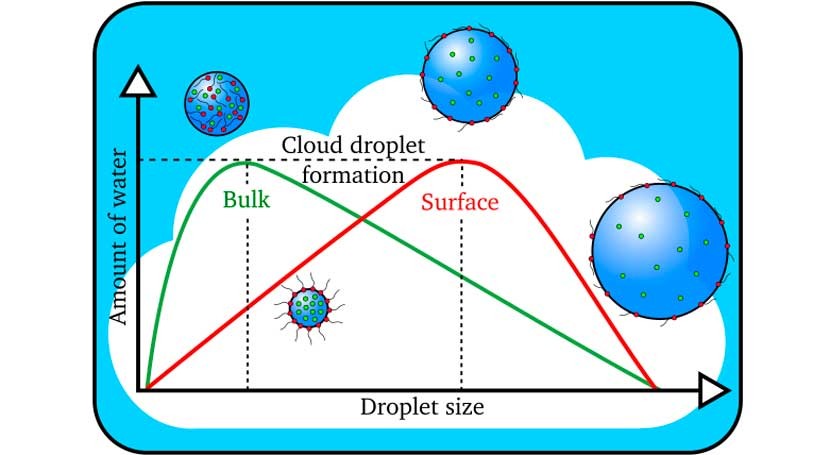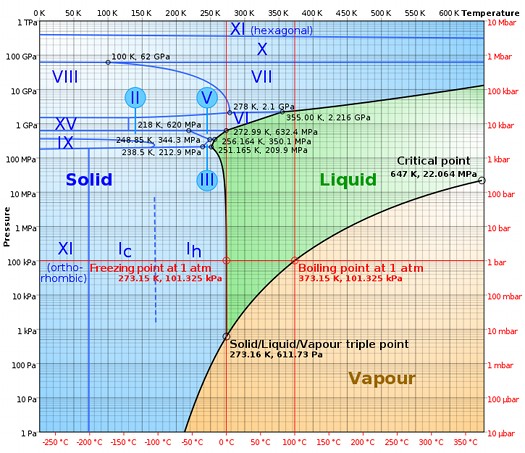¿Como se forman las nubes? y ¿por que a grandes alturas?// How do clouds form? and why at great heights? ESP/ENG
Lo primero a aclarar es que el agua se evapora a toda temperatura, ya sea la del ambiente o la de una superficie muy caliente, si no me creen pueden preguntarse ¿Por qué se seca el suelo o la ropa?. Así que teniendo en cuenta esto el aire del ambiente tiene cierta cantidad de humedad, la humedad se clasifica en relativa o absoluta (esto lo explicare mañana).
At first, most will already know that clouds are formed by water, the intriguing thing is that water in a gaseous state is not white and you can check this by placing a container with water over direct fire.The first thing to clarify is that water evaporates at all temperatures, be it that of the environment or that of a very hot surface. If you don't believe me, you can ask yourself why does the floor or clothes dry out? So taking this into account, the ambient air has a certain amount of humidity, humidity is classified as relative or absolute (I'll explain this tomorrow).

Ahora queda explicar cómo es que el vapor de agua llega hasta grandes alturas, esta explicación es sencilla y no tan fácil de llegar a una conclusión como la que vas a leer; primero es de saber que el sol calienta el suelo y por lo tanto el aire que se encuentra a la altura del suelo esta más caliente y cuando choca con una masa de aire húmedo y frio, el aire caliente se eleva por dos razones.
A medida que los gases ascienden también se difunden, como se puede explicar con la Ley de Graham, lo que a la vez depende de la cantidad de cada gas presente en el ambiente. Por medio de la ley de Graham explicamos que el gas trata de ocupar todo el volumen posible y a la velocidad que lo hace.
Now it remains to explain how it is that water vapor reaches great heights, this explanation is simple and not so easy to reach a conclusion like the one you are going to read; First it is to know that the sun heats the ground and therefore the air that is at the height of the ground is warmer and when it collides with a cold and humid air mass, the hot air rises for two reasons.
The first is because the increase in temperature causes a decrease in the density of the gaseous mass. The second is that most of the air in general is nitrogen, and this is denser than water vapor. As gases rise, they also diffuse, as can be explained with Graham's Law, which in turn depends on the amount of each gas present in the environment. By means of Graham's law we explain that gas tries to occupy as much volume as possible and at the speed that it does.

Por estas explicaciones todavía no se puede comprender porque las nubes llegan hasta cierta altura y a que se debe su color blanco. Primero empezare por el tema del ascenso de la masa de vapor de agua.
El ascenso se debe a algo que se llama empuje, provocado por una masa de gas más denso que otro. En este caso el gas que es más denso que el vapor de agua es el Nitrógeno, como aclare anteriormente el 60-70 % de la atmosfera está compuesto por Nitrógeno.
Si bien a medida que estamos a mayor altura la densidad de los gases disminuye, la diferencia entre la densidad del Nitrógeno y la del vapor de agua se mantienen cercanas, siendo mayor la del Nitrógeno. Hasta cierta altura el empuje del Nitrógeno se mantiene a flote pero llega un momento en el que el peso del vapor de agua es igual al empuje producido por el Nitrógeno y la nube se mantiene a esa altura, esto también se debe en parte a que las moléculas de agua tienen fuerzas moleculares que las ayudan a estar unidas y tener el peso suficiente para estar a flote.
From these explanations it is still not possible to understand why the clouds reach a certain height and what is the reason for their white color. First I will start with the topic of the rise in the mass of water vapor.
The rise is due to something called thrust, caused by a mass of gas that is denser than another. In this case, the gas that is denser than water vapor is Nitrogen, as explained above, 60-70% of the atmosphere is made up of Nitrogen.
Although as we are higher the density of the gases decreases, the difference between the density of Nitrogen and that of water vapor remains close, being greater that of Nitrogen. Up to a certain height the Nitrogen thrust remains afloat but there comes a time when the weight of the water vapor is equal to the thrust produced by the Nitrogen and the cloud remains at that height, this is also partly due to the fact that the Water molecules have molecular forces that help them stick together and have enough weight to float.

Solo queda explicar porque la nube es de color blanco, y esto es muy simple de explicar, ya que es hielo o nieve como quieren llamarlo. A esas la temperatura es mucho menor a los 0° C y por lo tanto el agua se congela formando pequeños cristales, la mayoría pensaran porque no se caen las nubes si son agua congelada y es por la razón de que el agua se encuentra tan dispersa que al congelarse las moléculas de agua tienen un peso insignificante contra el empuje del aire.
It only remains to explain why the cloud is white, and this is very simple to explain, since it is ice or snow as they want to call it. At those the temperature is much lower than 0 ° C and therefore the water freezes forming small crystals, most of them will think why the clouds do not fall if they are frozen water and it is for the reason that the water is so dispersed that when the water molecules freeze they have an insignificant weight against the pressure of the air.
